1923 – 2010
Inducted 2010
“It’s only after being aware of what’s around us that we develop an understanding of what nature is like.” –Ruth Hine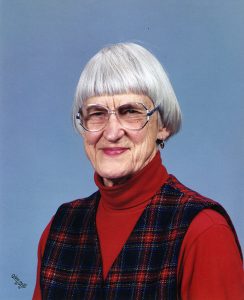
Hine’s work at the DNR left an indelible mark on Wisconsin conservation history. As editor and then chief of the Research and Public Information and Publications Section of the Bureau of Research, she oversaw the technical editing and writing of research reports from 1949-84. She also crossed over to the popular press to pen articles on natural resources topics for magazines and other publications.
It was a male-dominated field when Hine first began her duties. A 1959 Milwaukee Journal article about Hine proclaimed in a headline, “Woman finds place in conservation work.” Many other women found a place, too, thanks in no small part to the excellence of Hine’s work.
Hine told interviewers that her goal was to provide reports that appealed not only to researchers and scientists, but were also valued by administrators, policymakers and the general public.
She played a key role in development of the state’s endangered species program, volunteering to lead co-workers in studying the disappearance of species and chairing the committee that developed the state’s first endangered species list. She sent out a call statewide for sightings of certain animals and set up a system for keeping records of the sightings. Her efforts led to the Legislature’s establishment of the Bureau of Endangered Resources. She then worked to establish a foundation to support the endangered species program.
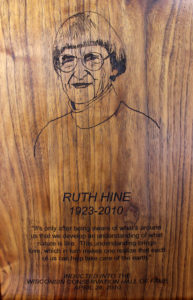 With her leadership, the DNR undertook annual frog surveys. Frogs, she noted, “were essentially overlooked. We didn’t pay much attention to frogs.” The importance of these amphibians as indicators of ecological health has since become well known.
With her leadership, the DNR undertook annual frog surveys. Frogs, she noted, “were essentially overlooked. We didn’t pay much attention to frogs.” The importance of these amphibians as indicators of ecological health has since become well known.
In her endeavors, Hine was driven by a simple goal: “It was the desire to get more people interested in the outdoors and accept their responsibilities,” she said in a 2009 Conservation Hall of Fame interview.
A Columbus, Ohio, native, she came to Wisconsin in the 1940s, hoping to study under Aldo Leopold (WCHF Inductee) at UW-Madison. She was unable to do so, instead earning a graduate degree in zoology and then a Ph.D. in zoology and wildlife management at UW-Madison in 1949. It was the first Ph.D. awarded to a woman by the university.
Cyril Kabot, former chief of research for the then-Conservation Department, gave her the opportunity in 1949 to pursue a career in what had been a man’s world when he hired her as a conservation aide. In her years with the DNR, she helped hundreds of researchers turn out reports. She felt she needed first-hand experience to do that, so she took on roles as leader of mouse and pathology projects, sought rattlesnake dens, and worked on deer counts, waterfowl and prairie chicken bag checks and numerous other activities.
Back at the desk, she gave each manuscript careful attention. “Ruth’s brilliance and modesty as an editor conceal her hard work, generosity and hour upon hour of preparation,” said the late Frances Hamerstrom, another pioneering Wisconsin woman wildlife researcher. “Great editors get little credit in this world. Their gift is drawing others out to coerce them to produce the best that is in them – resulting in a top-notch publication.”
Susi Nehls worked with Hine for 16 years as a DNR research information and publications specialist. “She must have edited over 400 reports, journal articles and bulletins,” Nehls recalled. While most publications were about specific creatures and their management, Nehls noted that Hine saw a need for broader perspective. In response, she created a publication called “Wildlife, People and the Land” in 1961, describing the state’s total natural community and its interrelationships.
As retirement neared, Hine took on a part-time job as a naturalist for Lutheran summer camps in Wisconsin. She also volunteered countless hours at Bethel Horizons environmental camp in Dodgeville, operated by Bethel Lutheran Church in Madison.
In a 1991 interview with the late writer George Vukelic, she talked about how her faith and views of nature were intertwined: “As a Christian, I look upon the world as a magnificent, living organism created by God and sustained by God. Human beings are part of that creation, part of nature, if you will.”
Resources
Quotes from Ruth Hine, excerpts from AFIELD: Portraits of Wisconsin Naturalists, Empowering Leopold’s Legacy, by Sumner Matteson
A Naturalist by Her Own Design, article
Remembering a Conservation Giant, article by Bill Berry for Madison.com, 2010
Ruth Hine – MAS’ Environmentalist-of-the-Year, article in Madison Audubon Society newsletter, 1991
Ruth Louise Hine: Team Player Extraordinary, article by Frances Hamerstrom (WCHF Inductee) for Wisconsin Natural Resources, 1985
Know your Madisonian – Ruth Hine, article for the Wisconsin State Journal, 1985
Conservationist’s Plea: Let It Be, article by Joy Krause for The Milwaukee Journal, 1974
Female Widlife Expert Holds Doctor’s Degree, article by Hazel McGrath
Mice Mean Valuable Research – No Shrieks – for this U.W. Co-ed, 2 articles
Women Finds Place in Conservation, article by Marilyn Gardner for The Milwaukee Journal, 1959
Ruth Hine, UW-Madison Housing
What’s a Missing Lynx to You?, article by Ruth Hine for Wisconsin Conservation Bulletin, 1974
The Hunting-Season Toll of Hen Pheasants, article by Ruth Hine for Wisconsin Conservation Bulletin
Leaky Sponge, article by Ruth Hine for Wisconsin Conservation Bulletin
Photos
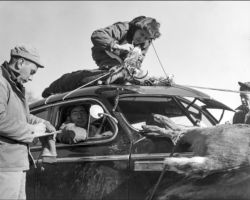
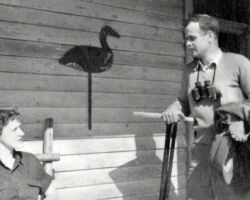
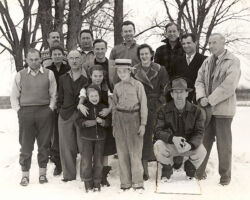
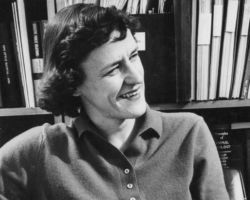
These images may be used under the Creative Commons Attribution-NonCommercial-NoDerivatives 4.0 International License.


